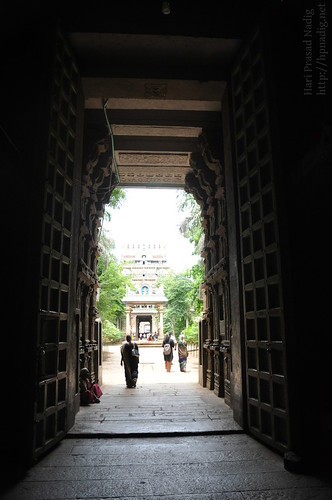I chanced upon an autobiography of Sri Rabindranath Tagore at the airport bookshop recently. ‘My Life in my words”, is not a “true” autobiography, since it is a series of his writings in English put together by Uma Das Gupta in chronological order which gives us a glimpse of him and the era which he lived in. However, be as it may, it is a fascinating book.
It slipped into my hands on my way to the CII Green Congress at Chennai. How fortuitous, since the first few thoughts connected so aptly with what I was thinking about the “Green” phenomena being generated by air conditioning consultants and their backers from the developed world. In the paradigm being espoused by them, technology and “science” solves all our issues of going green to sustain our planet. The more ways you use air-conditioning the more ways to make your building efficient! What if you don’t use air-conditioning at all?
I have always believed that Architecture means so much more than the fragmented view being espoused by experts of the green brigade. In my view Architecture has always been about synthesizing the diverse and often contradictory demands of living in the world.
Comfort both physical and psychological cannot be met by addressing them separately. They are two sides of the same phenomena. Only satisfying temperature and humidity conditions with the right lux levels to perform certain tasks is I’m afraid much like missing the forest for the trees. How can an accountant’s checklist dip into the fleeting and fluid nature of feelings and relate to the emotional nuances of art, literature and all the things that make us human and uplift our soul?
To some extent the manifestation of architectural space when seen from the point of size, scale and dimension confronts us with similar issues. But there at least we have the recourse of the magic of numbers. The golden section is a tested phenomenon and helps give coherence to size and dimension. I wonder if a similar condition is viable for temperature, humidity and lux levels for light?
But coming back to Tagore, who has this to say about poetry. He explains poetry so brilliantly! He says, “Does one write poetry to explain something? Something felt within the heart tries to find outside shape as a poem. So when, after listening to a poem, anyone says he has not understood. I am nonplussed. If someone smells a flower and says he does not understand, the reply to him is: there is nothing to understand, it is only a scent. If he persists, saying: ‘that I know, but what does it all mean?’ Then one has to either change the subject, or make it more abstruse by telling him that the scent is the shape, which the universal joy takes in the flower…
That words have meanings is just the difficulty. That is why he poet has to turn and twist them in metre and verse, so that the meaning may be held somewhat in check, and the feeling allowed a chance to express itself.
This utterance of feeling is not the statement of a fundamental truth, or a scientific fact, or a useful moral precept. Like a tear or a smile a poem is but a picture of what is taking place within. If Science or Philosophy may gain anything from it they are welcome, but that isn’t the reason of it’s being.”
After reading this I was tempted to substitute the word architecture instead of poetry. Because I believe that all the conditions mentioned apply so aptly to architecture.

![]() photo credit: Hari Prasad Nadig
photo credit: Hari Prasad Nadig
